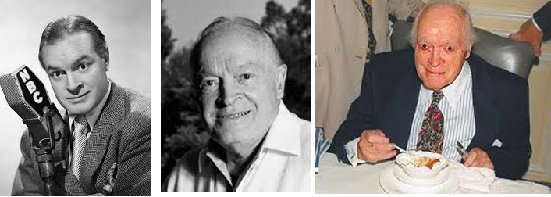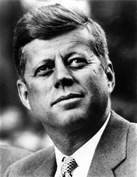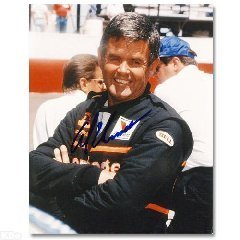Good 45º clear sunny morning.
Can you imagine that June starts in just 3 more days! Bunches of birthdays and anniversaries!
Yesterday started off dark and gloomy ... and then we got sunshine and blue sky! We topped at 84º!!!!
Picture of the Day... for us older folks, remember the Helms Bakery trucks? I got so excited when the Helms Man would pull out that drawer filled with donuts!!!!
Interesting about Cheetahs ..........
The cheetah is a large felid of the subfamily Felinae that occurs mainly in eastern and southern Africa and a few parts of Iran. The cheetah is characterized by a slender body, deep chest, spotted coat, a small rounded head, black tear-like streaks on the face, long thin legs and a long spotted tail. Its lightly built, slender form is in sharp contrast with the robust build of the big cats, making it more similar to the cougar. The cheetah reaches nearly 28 to 35 inches at the shoulder, and weighs 46–159 pounds. Though taller than the leopard, it is notably smaller than the lion. Basically yellowish tan or rufous to grayish white, the coat is uniformly covered with nearly 2,000 solid black spots.
The cheetah is the fastest land mammal on the planet, reaching speeds of up to 54 miles per hour. Cheetahs mainly hunt during the day to avoid competition with larger predators such as lions and hyenas, which usually hunt at night. Unlike other cats, the cheetah has claws that are not fully retractable, enabling it to grip the ground when in a hunting sprint. The common name ‘cheetah’ is derived from the Hindi word chita which means ‘spotted’ or ‘sprinkled’, describing the species’ striking coat.
From the Slow Roasted Italian...
One Pan Baked Chicken Teriyaki is an easy weeknight meal that is full of flavor. Baked with lots of veggies that you can use as a side dish.
One Pan Baked Chicken Teriyaki is an easy weeknight meal that is full of flavor. Baked with lots of veggies that you can use as a side dish.
- 4-6 bone-in, skin-on chicken thighs
- 1 large red onion, chopped
- 2-3 cups ounces broccoli florets
- 3 carrots, cut diagonally in 1-inch-thick slices
- 1 green bell pepper, chopped
- 2 tablespoon olive oil
- ½ teaspoon red pepper flakes
- ½ teaspoon salt
Teriyaki Sauce
- 1 cup water
- 1/2 cup reduced sodium soy sauce
- 1/3 cup light brown sugar, packed
- 1 tablespoon sesame oil
- 1 tablespoon minced garlic
- 1 tablespoon freshly grated ginger
- 3 tablespoons honey
- 1 tablespoon cornstarch
- Preheat oven to 400º.
- Lightly coat a 9×13 baking dish with nonstick spray.
- To make the teriyaki sauce: add all the sauce ingredients except cornstarch, to a small saucepan over medium heat, whisk to combine and bring it to a simmer.
- Mix cornstarch with 1 tablespoon of water until fully combined. Stir in cornstarch mixture into the sauce, and simmer until thickened enough to coat the back of a spoon, about 2 minutes. Let the sauce cool to room temperature. Reserve 1/2 cup and set aside.
- Add chicken to a gallon size Ziploc bag or to a large Tupperware bowl. Add chicken and add the remaining sauce. Marinate for at least 30 minutes or overnight, turning the bag occasionally to make sure the chicken marinates uniformly.
- When ready to cook, drain the chicken from the sauce. Do not discard the sauce yet.
-
Add the chopped veggies to a large bowl, add the olive oil, red pepper flakes and salt. Stir to combine.
- Add the veggies to the prepared baking pan. Top with the chicken and the remaining teriyaki sauce.
- Place into oven and roast until completely cooked, about 25-30 minutes. With an internal temperature of 165º.
- Check the chicken and turn on the broiler for the last 5 minutes, for a crispier top on the chicken.
- Serve immediately over rice if desired, with veggies on the side, garnished with sesame seeds and green onion.
Historically this date.........
1886 – The Pharmacist John Pemberton places his first advertisement for Coca-Cola, the ad appearing in The Atlanta Journal.
1942 – Bing Crosby, the Ken Darby Singers and the John Scott Trotter Orchestra record Irving Berlin's "White Christmas", the best-selling Christmas single in history.
1953 – Edmund Hillary and Sherpa Tenzing Norgay become the first people to reach the summit of Mount Everest, on Tenzing Norgay's (adopted) 39th birthday.
Just think, if Hillary Clintoon had married Edmund .... what her name would be! LOL.
1988 – The U.S. President Ronald Reagan begins his first visit to the Soviet Union when he arrives in Moscow for a superpower summit with the Soviet leader Mikhail Gorbachev.
2001 – The U.S. Supreme Court rules that the disabled golfer Casey Martin can use a cart to ride in tournaments.
2004 – The National World War II Memorial is dedicated in Washington, D.C.
And births this date include...
Click on his name.... interesting read.
My mother (her parents both immigrated from Scotland) was born at her aunt's house in Cleveland Ohio in 1905.The Hopes immigrated from London and moved next door to my mom's aunt in 1908. Her aunt's kids all played with the Hope kids. And another thing, Bob Hope's name was Leslie and my mom married a Leslie (Laney)!
1917 – John F. Kennedy, American politician, 35th President of the United States (d. 1963)
1955 – John Hinckley, Jr., American attempted assassin of Ronald Reagan
All I know. Nuff said. Happy Hump Day. Ciao.
xo Sue Mom Bobo
National Paperclip Day is observed each year on May 29. Yes, even the paperclip has its own day of honor. It is about that well-known piece of curved wire that keeps our papers together and helps keep us organized.
While there are much earlier claims to the invention of the paperclip, according to the Early Office Museum, the first patent for a “bent wire paper clip” was presented to Samuel B. Fay in the United States in 1867. The original intention of Fay’s clip was to attach tickets to fabric. However, U.S. patent 64,088 recognized that it could also be used to attach papers together.
There were as many as 50 others that received patents for similar designs prior to 1899. One other notable name receiving a patent for his paperclip design in the United States was Erlman J. Wright in 1877. At that time, his clip was advertised for use in fastening newspapers.
The Gem paperclip, which was most likely in production in Britain in the early 1870s by The Gem Manufacturing Company, was never patented. It is the most common type of wire paper clip and is still in use today. It was introduced to the United States around 1892 and in 1904, Cushman & Denison registered a trademark for the “Gem” name in connection with paper clips. Paperclips are still sometimes called “Gem clips.”
Today, paperclips come in various sizes, shapes and colors and can make your paperwork look more fun and lively.
Paperclips are not just for holding papers together. There are many other things that you can do with them!
- Replace a zipper tab
- Unclog a spray bottle
- Unclog a single serve coffee maker
- Hem holder
- Emergency hooks for broken necklaces
The Paper Clip Project
During World War II this small, universal office supply provided a visual method of protest at a time when any outward signs of objection could be dangerous, even in familiar company.
During World War II this small, universal office supply provided a visual method of protest at a time when any outward signs of objection could be dangerous, even in familiar company.
Early in the war, Norwegians were particularly persistent in their development of symbols. The paper clip represented “sticking together” for a time until the Nazis caught on and banned the wearing of paper clips.
According to a March 5, 1941, Provo, Utah newspaper article (The Daily Herald), the Norwegians switched to new symbols as quickly as the bans could be issued.
In 1998, a group of middle school students led by language arts teacher Sandra Roberts and associate principal David Smith began a project through a Holocaust education class. The voluntary after-school class, Whitwell Middle School principal Linda Hooper’s idea, would be the foundation for developing tolerance and diversity.
Inspired by the story of the protesting Norwegians and their paper clips, the students began to collect six million paper clips – one paper clip representing one Jew who perished during the Holocaust. Adults today still wrestle with how the Holocaust could occur. Imagine middle school students trying understand the magnitude of such an event on humanity.
In 1998, a group of middle school students led by language arts teacher Sandra Roberts and associate principal David Smith began a project through a Holocaust education class. The voluntary after-school class, Whitwell Middle School principal Linda Hooper’s idea, would be the foundation for developing tolerance and diversity.
Inspired by the story of the protesting Norwegians and their paper clips, the students began to collect six million paper clips – one paper clip representing one Jew who perished during the Holocaust. Adults today still wrestle with how the Holocaust could occur. Imagine middle school students trying understand the magnitude of such an event on humanity.
The Paper Clip Project gained international attention and by 2001 the students collected more than 30 million paper clips. The school dedicated a Children’s Holocaust Memorial which displays an authentic German rail car filled with a portion of the paper clips.












